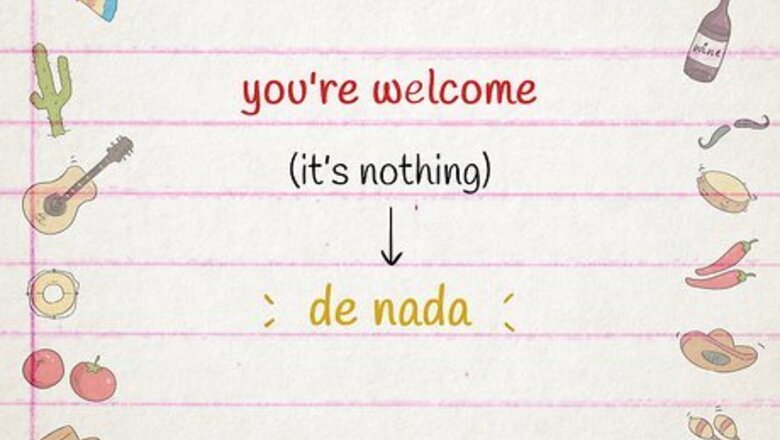
views
Standard "You're Welcome"
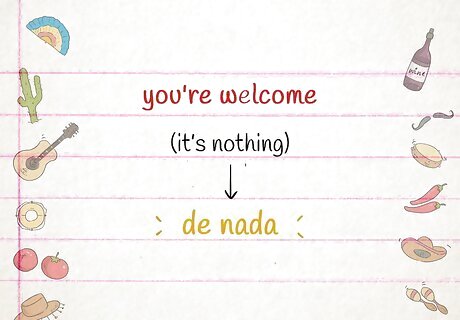
Use "de nada." This is the standard, textbook way of answering “you're welcome” when someone thanks you. A slightly more accurate English equivalent would be the response, “it's nothing,” rather than “you're welcome.” De is a preposition that can be translated to "of," "from," "about," "as," or "with," depending on the phrase it modifies. The most common translation is "of," however. Nada is a noun meaning "nothing." The strictest, most literal translation of the phrase would be "of nothing" or "about nothing." Note that there is no verb in this phrase, so the way it is said or written does not change based on who you speak to.
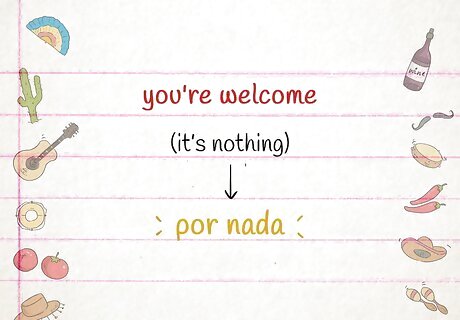
Switch to "por nada." While much less common, por nada is another way of saying “you're welcome” that roughly translates to “it's nothing.” More literally, por nada means something along the lines of for nothing. In Spanish, por is a preposition usually used to mean “for” or “on account of.” Note that this phrase is not used in every Spanish-speaking country. It is used in various Latin American countries, like Costa Rica and Puerto Rico, but it is not used in all Latin American countries or in Spain.
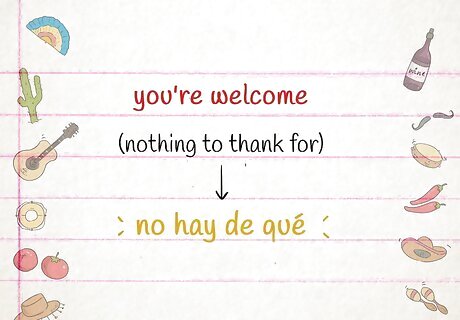
Say "no hay de qué." The literal translation of this phrase does not make much sense in English, but the general meaning is "nothing to thank for." It's pretty common and more polite than "de nada". Hay translates to "there," so no hay is close to saying "not there" or "there is not." Qué translates to "what."
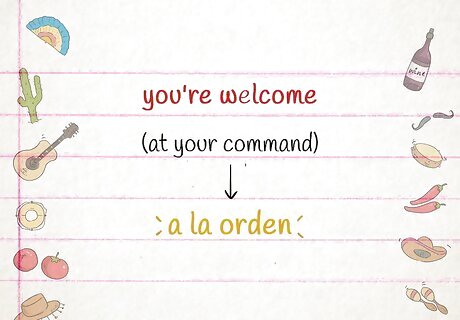
Say "a la orden" o "a su/tu orden". This translates to "at your command/at the command" meaning that if there's anything else you can assist with, you will be very much willing to do it at the person's command. It is very polite and very common. Some countries use "tu" more prominently than "usted" (and vice versa) and this depends if you use 'a su orden' or 'a tu orden'. "A la orden" is neutral.
Expressing Your Pleasure

Say "con gusto." This phrase is literally translated to “with pleasure” in English. Con translates to with in Spanish. As a noun, gusto can be translated to “pleasure.”
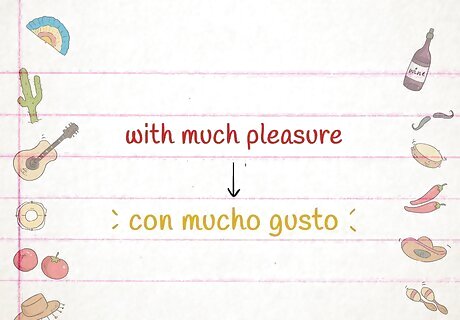
State "con mucho gusto." This phrase literally means “with much pleasure.” You can also say "con gusto". Don't just say "mucho gusto" as this phrase (short for "mucho gusto en conocerte" or "I am pleased to meet you") is more often used as a response to an introduction rather than a way of saying “you're welcome.”
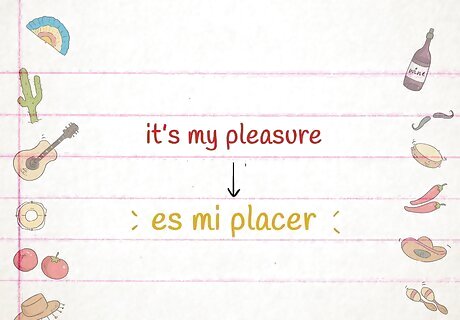
Use "es mi placer” only if you're feeling especially polite. This saying means “it is my pleasure.” This one is fancy and sparingly said. Use it if you're trying to get someone's interest in you, or if you're trying to impress, or if you simply woke up in a really good mood that day and felt like sprinkling love and kindness everywhere. Es is a form of the verb ser, meaning “to be.” This is the third person singular conjugation, so it is essentially the same as saying “it is.” Mi is a way of showing ownership and means “my.” Placer means “pleasure.” Similarly, you could also simply state “un placer,” or “a pleasure,” to imply that the favor you are being thanked for was a pleasure to perform. Don't use "el placer es mío." Translated literally, this means, “The pleasure is mine.” This is used in response to an introduction. For example, you would say it in response to "Es un placer conocerte Pedro" (it's a pleasure to meet you Pedro).



















Comments
0 comment